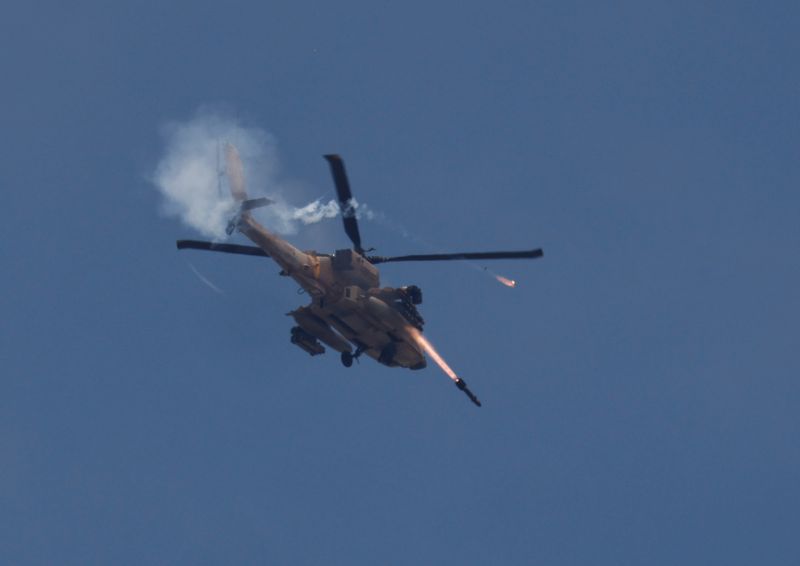By Nidal al-Mughrabi
CAIRO (Reuters) – Israeli tanks forged deeper into eastern Rafah, reaching some residential districts on Tuesday, stepping up an offensive in the southern border city where more than a million people had been sheltering after being displaced in seven months of war.
Israel’s international allies and aid groups have repeatedly urged against a ground incursion into refugee-packed Rafah, warning of a potential humanitarian catastrophe.
Qatar’s Prime Minister Sheikh Mohammed bin Abdulrahman Al-Thani said Israel’s operations in Rafah have set back efforts at trying to reach a ceasefire in talks that are being mediated by Qatar and Egypt, although it would continue to negotiate.
Israel has vowed to press on into Rafah even without the support of allies, saying its operation is necessary to root out four remaining Hamas battalions holed up in the city.
“The tanks advanced this morning west of Salahuddin road into the Brzail and Jneina neighbourhoods. They are in the streets inside the built-up area and there are clashes,” one resident told Reuters via a chat app.
Video on social media showed one tank on George Street in Al-Jneina neighbourhood. Reuters could not verify the video.
Hamas’s armed wing said it had destroyed an Israeli troop carrier with an Al-Yassin 105 missile in the eastern Al-Salam neighbourhood, killing some crew members and wounding others.
There was no immediate comment by the Israeli military.
‘NOWHERE IS SAFE’, UNRWA SAYS
Israel issued evacuation orders for people to move from parts of eastern Rafah a week ago, with a second round of orders extending to further zones on Saturday.
They are moving to empty tracts of land, including Al-Mawasi, a sandy strip bordering the coast that Israel has designated as a humanitarian area. Aid agencies have warned the zone lacks sanitary and other facilities to host an influx of displaced people.
UNRWA, the main United Nations aid agency in Gaza, estimates some 450,000 people have fled Rafah since May 6.
“People face constant exhaustion, hunger and fear. Nowhere is safe,” the agency posted on X.
Fighting across the strip has intensified in recent days, including in the north, with the Israeli military heading back into areas where it had claimed to have dismantled Hamas months ago. Israel says the operations are to prevent Hamas, which controls Gaza, from rebuilding it military capacities.
The Palestinian death toll in the war has now surpassed 35,000, according to Gaza health officials, whose figures do not differentiate between civilians and fighters. It said that 82 Palestinians were killed in the past 24 hours, the highest death toll in a single day in many weeks.
A foreign U.N. security staff member was killed in Rafah on Monday when a U.N.-marked vehicle was struck. A spokesperson said it was the first international U.N. fatality of the war and brought the total death toll of U.N. personnel to around 190.
Israel launched its operation in Gaza following the devastating attack on Oct. 7 by Hamas-led gunmen who rampaged through Israeli communities around the enclave, killing around 1,200 people and taking more than 250 hostages, according to Israeli tallies.
Gun battles between Israeli forces and Palestinian gunmen were the fiercest in months, according to residents, both in the north and south of the densely populated enclave of 2.3 million people.
In the Zeitoun neighbourhood of Gaza City in the north, bulldozers demolished clusters of houses to make a new road for tanks to roll through into the eastern suburb.
In northern Gaza’s Jabalia, a sprawling refugee camp built for displaced Palestinians 75 years ago, residents said Israeli forces were trying to reach as deep as the camp’s local market under heavy tank shelling.
(Reporting by Nidal al-Mughrabi in Cairo, Clauda Tanios in Dubai; Writing by Sharon Singleton; Editing by Alex Richardson)
